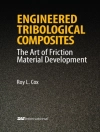New developments in the applications of fracture mechanics to engineering problems have taken place in the last years. Composite materials have extensively been used in engineering problems. Quasi-brittle materials including concrete, cement pastes, rock, soil, etc. all benefit from these developments. Layered materials and especially thin film/substrate systems are becoming important in small volume systems used in micro and nanoelectromechancial systems (MEMS and NEMS). Nanostructured materials are being introduced in our every day life. In all these problems fracture mechanics plays a major role for the prediction of failure and safe design of materials and structures. These new challenges motivated the author to proceed with the second edition of the book.
The second edition of the book contains four new chapters in addition to the ten chapters of the first edition. The fourteen chapters of the book cover the basic principles and traditional applications, as well as the latest developments of fracture mechanics as applied to problems of composite materials, thin films, nanoindentation and cementitious materials. Thus the book provides an introductory coverage of the traditional and contemporary applications of fracture mechanics in problems of utmost technological importance.
With the addition of the four new chapters the book presents a comprehensive treatment of fracture mechanics. It includes the basic principles and traditional applications as well as the new frontiers of research of fracture mechanics during the last three decades in topics of contemporary importance, like composites, thin films, nanoindentation and cementitious materials. The book contains fifty example problems and more than two hundred unsolved problems. A ‘Solutions Manual’ is available upon request for course instructors from the author.
สารบัญ
Linear Elastic Stress Field in Cracked Bodies.- Elastic-Plastic Stress Field in Cracked Bodies.- Crack Growth Based on Energy Balance.- Critical Stress Intensity Factor Fracture Criterion.- J-Integral and Crack Opening Displacement Fracture Criteria.- Strain Energy Density Failure Criterion: Mixed-Mode Crack Growth.- Dynamic Fracture.- Fatigue and Environment-Assisted Fracture.- Micromechanics of Fracture.- Composite Materials.- Thin Films.- Nanoindentation.- Cementitious Materials.












